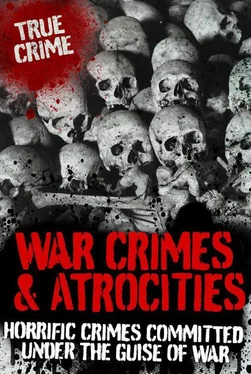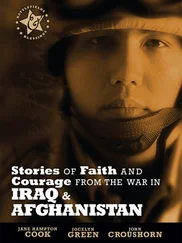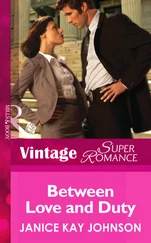THE KILLING STARTS
By 1997, the KLA’s access to weapons was boosted by the eruption of civil war in neighbouring Albania. The country’s armouries were raided by many different factions, and many of the automatic weapons found their way into the hands of the KLA.
The first major military assault by the KLA took place in September 1997, with the use of anti-tank weapons over a quite a large area of Kosovo. In February 1998, their attacks took on a more sinister tone when they started to attack Serb houses in the villages of Klina, Decani and Djakovica. They attacked a Serb refugee camp at Baboloc and ambushed several Serb policemen on the road between Glogovac and Srbica. Their actions provoked a major counter-offensive by Yugoslav security forces against the KLA strongholds, which resulted in one of the worst massacres in the history of Kosovo. Approximately 80 Albanians, including many women and children, were killed in the central Drenica region of Kosovo.
For two days the Serb police massacred the Albanians, either shooting them with shotguns or hitting them with other hard or sharp objects. Everywhere you could see the evidence of heinous carnage that had taken place. Bodies, many of which had been badly mutilated, lay on the ground and slumped across the thorny bushes that lined the roads.
Reprisal killings continued into 1998, including the massacre of the Deliaj clan in September of that year. After the massacre the bodies of 15 women, children and elderly members of the clan lay in grotesque positions among the rocks and streams of the gorge just below their village. Some had been shot at close range, others had been mutilated as they tried to escape the Serb forces. One of the cases of mutilation was a 30-year-old woman, Lumnije Deliaj, who was seven months pregnant. Her abdomen was slit open. Many of the houses had been burnt to the ground with the inhabitants still inside, too afraid to run outside for fear of being shot. Down a dirt track, just a few miles from the village lay the bodies of three elderly people, who had been shot in the head as they apparently came out to plead for their lives. However, the massacre that actually forced the West to get involved took place at the village of Racak on 16 January, 1999.
RACAK
In the early hours of 15 January, 1999, members of the Serb police force surrounded the village of Racak, in the district of Stimlje. They were searching for a group of terrorists from the KLA, who had killed a policeman, Svetislav Przic, five days earlier. They were notorious for having carried out multiple criminal acts of murder and torture and the security forces were eager to stop them doing any further damage.
The Serbs started by shelling the village in the early hours of morning, then stormed in and rounded up a group of around 40 men and youths. Most of them were severely beaten before being led down a steep path which went into a gully. The bodies of 45 ethnic Albanian civilians were later discovered outside the village by residents shortly after the government forces withdrew. The gully was filled with a mass of tangled bodies, there was blood everywhere and many corpses showed horrific signs of mutilation.
Following an international outcry, the Serbian government orchestrated a cover-up story by saying that Racak village was a base for KLA fighters. Appalled at what was happening in Kosovo, after the Racak massacre the international community, led by the USA, stepped up pressure on the Milosevic regime. They arranged a conference at the French chateau of Rambouillet to try and negotiate a peace settlement that would give Kosovo partial autonomy, not the full scale independence that the Albanians were demanding. The conference was a disaster, and the Serbs refused to sign any form of peace agreement. Instead, they withdrew to make their own plans to deal with the ethnic-Albanian problem. Their solution was ‘Operation Horseshoe’.
The existence of the operation was immediately denied by the Yugoslav and Serbian governments, and by Milosevic himself, but it remains a subject of controversy right up to the current day. There is no doubt that there was some form of systematic ethnic cleansing, which produced the refugee crisis in Kosovo. It is estimated that a village a day was hit during 1998–99, targeting homes, shops and businesses owned by Albanians. Serb police used ruthless tactics to wipe out the villages neighbourhood by neighbourhood. The Albanians were literally ear-marked for destruction, solely because of their racial identity.
SUVA REKA
On 26 March, 1999, the Serb forces attacked the village of Suva Reka and killed 44 members of the Berisha family. Only two women and one child survived the massacre and one of them, Shyhrete Berisha, later testified at the trial of six former Serbian officials. Among the dead were 14 children, three babies and 14 women, including one who was nine months pregnant.
It all started when police stormed out of the local police station and started firing at six men standing in a courtyard outside their family home. Despite the fact that the men raised their arms in surrender, the police still shot them in cold blood. Other members of the family tried to run away, but they were stopped in front of a cafe not far from their house. The police forced the family inside the cafe, where they opened fire and threw two hand grenades inside the building.
Shyhrete Berisha was badly wounded, but she played dead as it appeared the police were firing at anything that moved. After about 30 minutes, the police threw the bodies into the back of a truck. Shyhrete and another two survivors managed to jump off the back of the truck without being noticed, and local Albanians helped them escape through the woods. A month later they all took refuge in Albania.
MEJA
On 30 April, 1999, an estimated 100 to 300 men and youths (the exact figures are still not known) are believed to have been executed at the village of Meja, northwest of Djakovica. Starting on 27 April, Serbian police and paramilitary units, together with soldiers of the Yugoslav army, forcibly expelled residents from the villages of Pecaj, Nivokaz, Dobrash, Sheremet, Jahoc, Ponashec, Racaj, Ramoc, Madanaj, Orize and Cuska. The Serbs surrounded the villages, rounded up the inhabitants and forced them to walk towards Djakovica. During the course of the day many of the men and boys were taken away from the rest of the group. There are reports that the soldiers were seen holding literally hundreds of men at gunpoint. Those people who passed by later in the day reported having seen an ‘enormous pile of bodies’ at the side of the road.
Those who made it across the border into Albania, mainly women, children and the elderly, were severely traumatized and spoke of mass slaughter at the village of Meja. One witness claimed she saw 70 or more men squatting with their hands behind their heads in a small ditch that ran parallel with the road. Refugees that passed through Meja on that afternoon said there was blood and bodies everywhere, many lying face down and none of them were moving.
CLOSING DAYS OF THE WAR
In the closing days of the war, the grim and sordid details of mass slaughter appeared on the front pages of the world’s newspapers. It was given the label of the ‘Serbs Factory of Death’ as more and more evidence came to light of the atrocities that had taken place. In Kosovo’s capital of Prishtina, a beautiful 16th-century mosque was burnt down. Bulldozers had been used to flatten the rubble of many other mosques and buildings, leaving just the scars of war on the landscape. One elderly ethnic Albanian told a reporter, ‘They tried to wipe out our Moslem history. You can erase our buildings but you cannot destroy our people.’
Читать дальше












